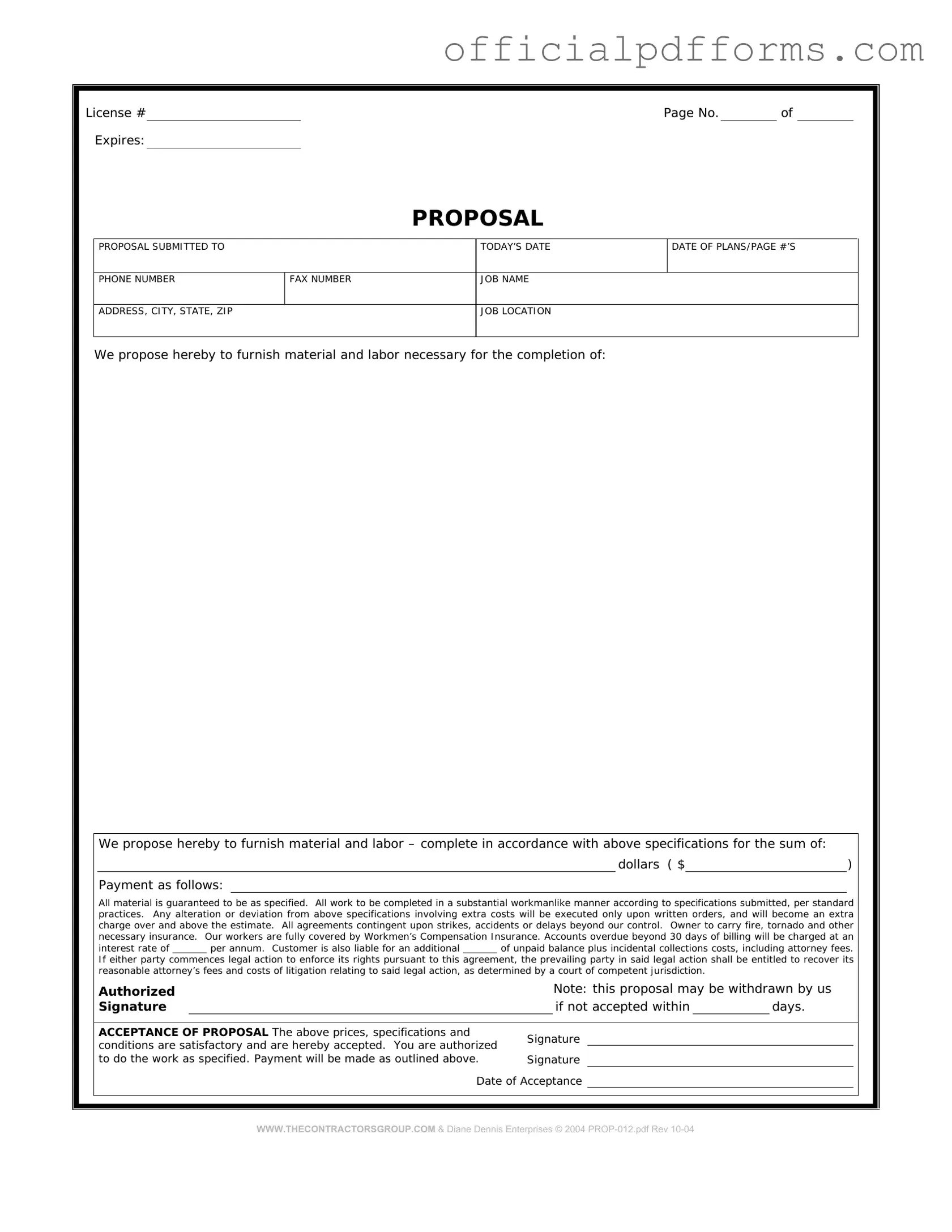Fill in a Valid Construction proposal form Form
The Construction Proposal Form is a crucial document that outlines the specifics of a construction project, including costs, timelines, and scope of work. This form serves as a formal proposal from contractors to clients, ensuring clarity and mutual understanding before any work begins. To streamline your construction process, consider filling out the form by clicking the button below.
Access Form Online
